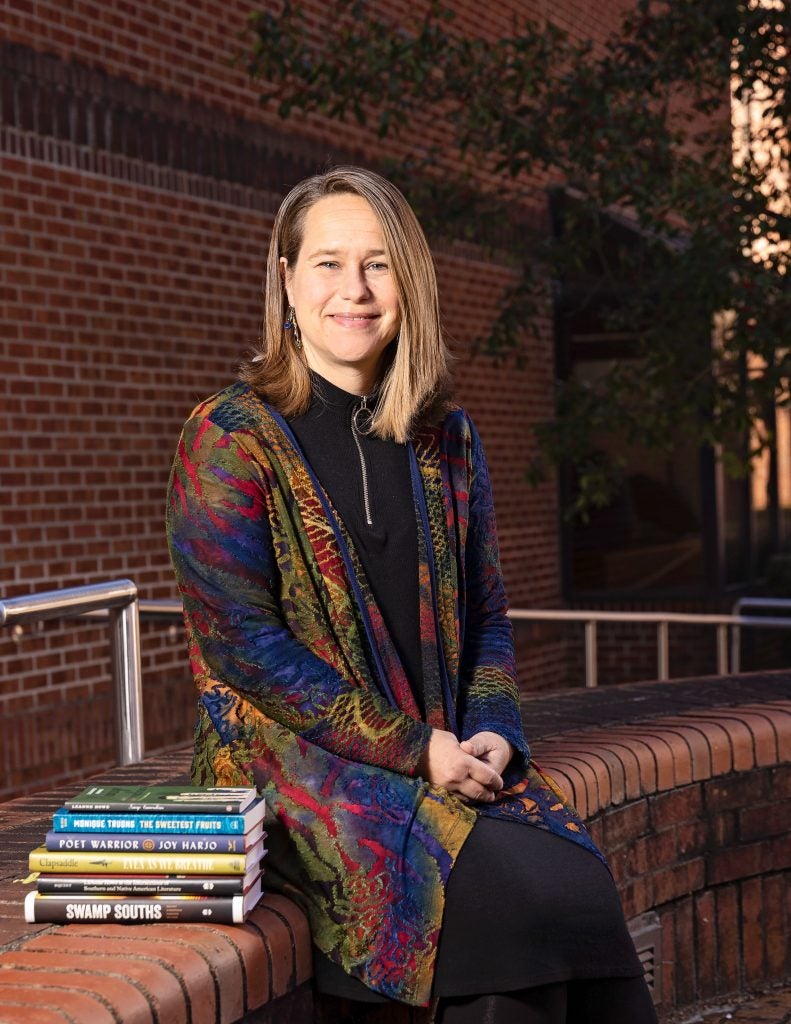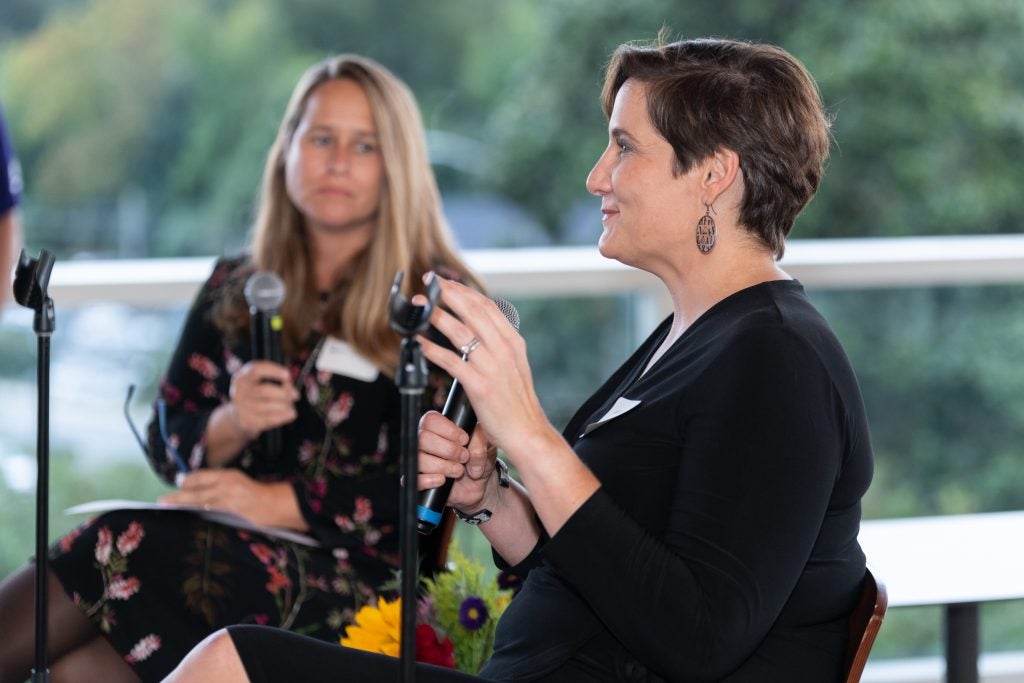by Kirstin L. Squint, Guest Feature Editor

When Editor Margaret Bauer first asked me to guest edit a special feature section of North Carolina Literary Review—to be the first guest editor—I immediately accepted the opportunity. I did not know what I was getting into.
My initial experience as a contributor to NCLR came in 2015, when I interviewed Vietnamese-American novelist, Monique Truong, whose stunning novel, Bitter in the Mouth, is set in Boiling Springs. I was thrilled for the chance to interview a writer whose work never fails to surprise and enrapture students with its lyricism, humor, and pain. The interview itself was as wonderful as I had hoped, and the final published piece was contextualized with a gorgeous design that included family photographs of the author. That was the moment I understood how unique NCLR is—a journal of both scholarly and creative writing, interesting author interviews, and a showcase of North Carolina visual artistry. Since then, I have sat on the editorial board as a peer reviewer, a preliminary screener for writing competitions, and an occasional contributor of reviews and interviews.
My second interview in NCLR came out in the 2021 issue, a conversation with Annette Saunooke Clapsaddle, the first Eastern Band of Cherokee Indians citizen to publish a novel. That interview was particularly special to me because I am a scholar of southeastern Indigenous literature, and I know how much more scholarship needs to be done in that field. Consequently, Margaret’s suggestion that we focus an entire special feature section on Native American literature of North Carolina for the first time in the journal’s history seemed both exciting and appropriate to me.
I immediately got busy in the spring of 2021, crafting a call for papers and soliciting work from scholars in both Native American and Southern literary studies who I thought could offer important contributions to this historic issue. I also reached out to Indigenous North Carolina writers who I thought might want to contribute creative writing. Two years later, this beautiful issue has come together, and it is both what I imagined and different than what I imagined. Some pieces I solicited never came to fruition, and I received others through our CFP that left me in awe of their brilliance. I was also honored to collaborate with the NCLR editorial staff as we made contact with several North Carolina Native artists across the state and country whose painting, photography, pottery, and multi-modal creations dance around the writing in this issue, creating new perspectives on its ideas and images.

One thing I have learned is that the work Margaret has been doing for the last twenty-five years as NCLR editor is quite simply incredible. And my learning curve was daunting. There were so many tasks I had never considered might be in my purview: select judges for the creative and scholarly writing contests, solicit book reviews and other kinds of content for the online issues, write press releases, contact artists, consider design schemes and art options, meet with graduate student editorial assistants and undergraduate interns, publicize the issue, write grants . . . I could go on, but that would be boring. And the special feature section is only a part of the entire issue. Suffice it to say, North Carolina Literary Review is a complex and sophisticated publishing operation that requires the work of many hands, hearts, and minds to make its annual polished products.
Despite the challenges of my guest editorship, I am incredibly proud of what we have accomplished. NCLR’s first special feature section devoted to Native American literature of North Carolina is excellent. It contains creative writing by Cherokee and Lumbee authors; scholarship about Cherokee, Lumbee, and Catawba work; and art by Cherokee, Lumbee, and Catawba artists. Although the issue’s contents do not represent all of the state’s tribes (because the final product reflects what we received through our CFP and the contacts we made throughout the process), we hope that we have opened a door to welcome more writing in NCLR by North Carolina’s Native citizens. To that end, we will be actively promoting the issue in Indigenous communities and through Native American literary scholarship networks.

Art by Rhiannon Skye Tafoya
Design by Dana Ezzell Lovelace
I am deeply grateful to Margaret Bauer and the whole team for their commitment to this issue and their cheerful collaborative efforts. My guest editorship has both given me the opportunity to increase my own knowledge of Native American literature and culture of North Carolina, as well as to expand my editorial experience. I look forward to holding the 2023 print issue in my hands, especially knowing what it means to those communities whose voices are being heard through the incredible writing and art it contains.
If you want to hold it in your hands and add it to your bookshelf, subscribe today to reserve your copy.
ECU Land Acknowledgement: We acknowledge the Tuscarora people, who are the traditional custodians of the land on which we work and live, and recognize their continuing connection to the land, water, and air that Greenville consumes. We pay respect to eight recognized tribes; Coharie, Eastern Band of Cherokee, Haliwa-Saponi, Lumbee, Meherrin, Occaneechi Band of Saponi, Sappony, and Waccamaw-Siouan, all Nations, and their elders past, present, and emerging.